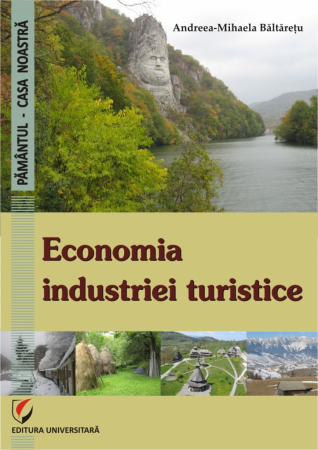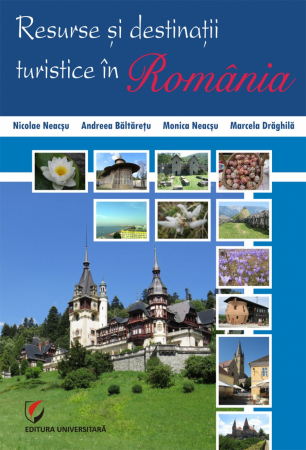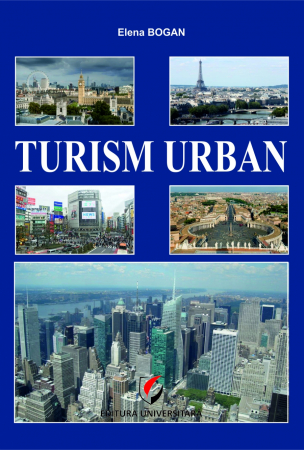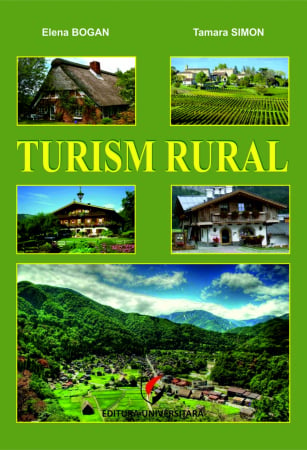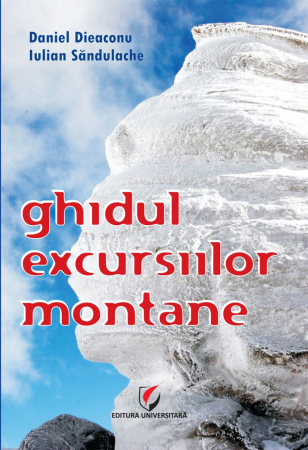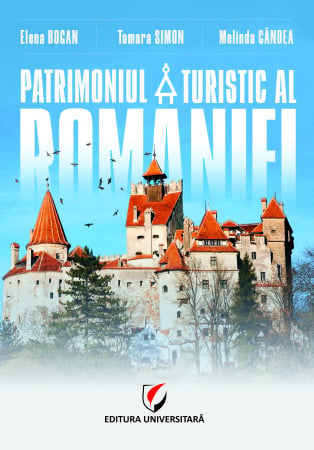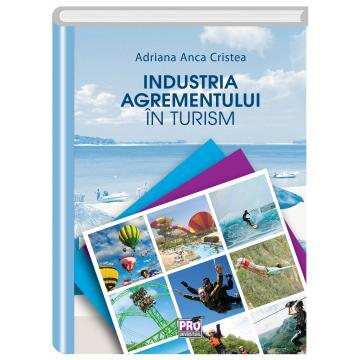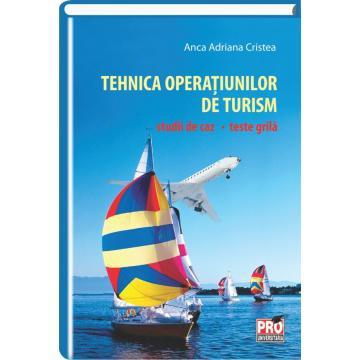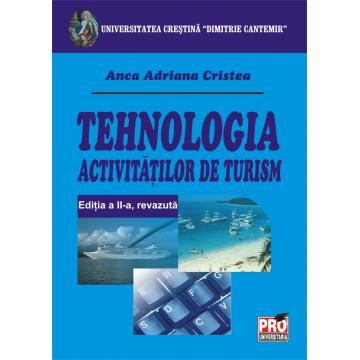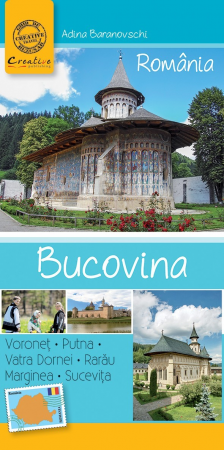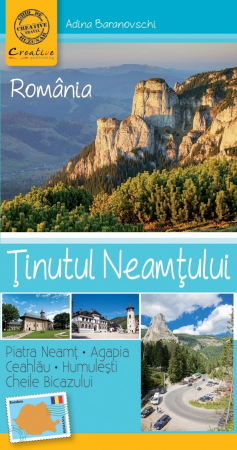ISBN: 978-606-591-664-7
DOI: 10.5682/9786065916647
Publisher year: 2013
Edition: I
Pages: 374
Publisher: Editura Universitară
Author: Andreea-Mihaela Baltaretu
- Description
- Download (1)
- Authors
- Content
- More details
- Reviews (0)
-
Amenajarea turistica a teritoriului
Download
PREFACE / 5
CHAPTER 1. LAND PLANNING / 11
1.1. Terminology and definitions / 11
1.2. The process of spatial planning at European level / 12
1.3. Spatial planning in a national context / 14
CHAPTER 2. TOURIST ARRANGEMENT OF THE TERRITORY / 25
2.1. Introductory elements / 25
2.2. Forms and characteristics of tourist arrangements / 28
2.3. The methodology of the tourist arrangement of the territory / 30
2.4. Principles of arranging tourist areas / 39
CHAPTER 3. CITIES AND ARRANGEMENT SPACE / 43
3.1. Genesis of cities / 43
3.2. Etymology, definitions, components / 46
3.3. Arranged space-city relationship / 47
3.3.1. Typology of cities and their evolution / 49
3.3.2. National network of localities / 65
3.3.3. The problem of space in urban development. Sustainable development of cities / 68
3.4. The metropolitan development of Romania / 70
3.5. Local Agenda 21/76
3.6. Case study: Accreditation of National Tourist Information and Promotion Centers / 81
CHAPTER 4. TOURIST ARRANGEMENT OF COASTAL AREAS / 86
4.1. Current characteristics of seaside tourism / 87
4.2. The stages of arranging the coastal areas at international level / 88
4.2.1. Pioneering Phase / 88
4.2.2. The beginning of mass tourism / 88
4.2.3. Contemporary explosion / 89
4.3. The arrangement of the Romanian coast / 89
4.4. Blue Flag Program / 94
4.5. Criteria for authorizing beaches in Romania for tourism purposes / 99
4.6. Ways of degradation and protection of the coast / 101
4.7. Models of tourist arrangement of the seaside / 102
4.8. Case study: Carrying out the nautical leisure activity in Romania / 104
CHAPTER 5. TOURIST PLANNING OF THE SPAS / 107
5.1. Trends of spa tourism at national and international level / 107
5.2. Health tourism / 109
5.3. Typology of the main spas in Romania by profile. Positive and negative aspects / 109
5.4. Types of clientele of spas and its characteristics / 115
5.5. Models of tourist arrangement of spa areas / 116
CHAPTER 6. TOURIST PLANNING OF MOUNTAIN AREAS / 119
6.1. Stages of development of mountain tourism / 119
6.1.1. Initial phase / 119
6.1.2. Transition phase / 120
6.1.3. The great development phase / 120
6.2. Mountain areas policy / 120
6.3. Environmental protection in mountain areas / 121
6.4. Classification of altitude resorts / 121
6.5. Mountain tourism in Romania / 123
6.6. The characteristics of the clientele of the mountain resorts / 140
6.7. Models of tourist arrangement of mountain areas / 140
6.8. Case study: Rules of behavior in trips to / from the mountains / 142
6.8.1. Code of ethics of mountain tourism / 142
6.8.2. The commandments of mountain tourism / 145
6.8.3. The mountain and its stories / 146
6.8.4. The cottage and its rules / 147
6.8.5. Rules to be observed on the mountain / 148
6.8.6. International Signaling Code on mountains in case of danger / 156
6.9. Measures for the prevention of mountain accidents and the organization of the rescue activity in the mountains / 157
6.10. Mountain law no. 347/2004, republished in 2009, with subsequent amendments / 164
6.11. Arrangement, approval, maintenance and operation of ski slopes and leisure trails / 167
6.12. Case study: Arranging adventure parks / 173
6.13. Case study: Arrangement model-Club Vila Bran, Brasov county / 173
CHAPTER 7. ARRANGEMENT OF PROTECTED AREAS / 181
7.1. General considerations regarding the advantages of practicing tourism in protected areas / 181
7.1.1. Negative effects of tourism on protected areas and methods of administration / 184
7.1.2. Creating a balance between positive and negative effects / 189
7.2. Definitions, classifications and the need to establish protected areas / 191
7.3. Areas of activity with influence on protected areas / 196
7.4. Protected areas worldwide / 202
7.5. Protected areas in Romania / 211
7.6. Practicing sport hunting inside protected areas / 223
7.7. Guiding principles regarding the offer of environmental education and interpretation programs in a protected area / 225
7.7.1. Techniques used / 228
7.7.2. Organizing an exhibition / 234
7.7.3. Arranging itineraries for nature lovers / 236
7.8. Order on the approval of the conditions for practicing sport recreational fishing in protected natural areas / 236
CHAPTER 8. TOURIST ARRANGEMENT OF OTHER TYPES OF AREAS / 239
8.1. Development of peri - urban areas / 239
8.1.1. Peculiarities of weekend tourism / 239
8.1.2. Green spaces / 240
8.1.3. Case study: Law on picnic activities / 247
8.2. Cave arrangement / 250
CHAPTER 9. THE PROCESS OF DEVELOPING A TOURIST RESORT IN SUSTAINABLE PURPOSES / 255
9.1. The characteristics of the resort and the action plan / 256
9.2. Attestation criteria of a tourist resort in Romania / 258
CHAPTER 10. ARRANGEMENT FOR TOURIST PURPOSES OF AN AREA / 264
10.1. Project plan / 264
10.2. Case study: Arrangement for tourist purposes of the area of the Tourist Complex Saturday / 271
10.3. Case study: Arrangement for tourist purposes of the Euro Park on the Bucharest - Pitesti highway / 280
CHAPTER 11. PROBLEMS IN THE FIELD OF TOURIST PLANNING / 292
11.1. Determining the optimal receiving capacity of the ski slopes / 292
11.2. Tourist loading capacity / 295
11.3. Accommodation needs forecast / 298
CHAPTER 12. ENVIRONMENTAL MANAGEMENT SYSTEM (EMS) AND ISO 14001 FOR CITIES / 301
12.1. Environmental problems facing cities and remedial solutions / 301
12.2. Internal and external benefits of SME / 303
12.3. Limitations and priorities of SME / 306
12.4. Activities and resources of SME / 306
CHAPTER 13. TERRITORIAL AGENDA OF THE EUROPEAN UNION / 308
13.1. Strengthening territorial cohesion / 308
13.2. Territorial priorities for the development of the European Union / 309
13.3. Territorial agenda of the European Union 2020/312
13.4. Development / spatial planning of Romania / 315
CHAPTER 14. EXAMPLES OF EXAMINATION SUBJECTS / 320
ANNEXES
Annex 1: Law no. 350/2001 on spatial planning and urbanism (updated) / 328
Annex 2: The eco-tourist guide / 348
Annex 3: The eco-citizen's guide / 354
Annex 4: Tourist Information Centers in Romania / 363
BIBLIOGRAPHY / 367
Spatial management of the territory is achieved through land use planning and urbanism, areas with major implications on balanced spatial development, heritage conservation, improving living conditions in urban and rural areas.
The tourist arrangement of the territory is a particular, complex and coherent field of the process of landscaping in general. The sustainability of any action currently undertaken both at macro and microeconomic level is a very topical requirement of contemporary society, and therefore of the planning process.
The guiding principles for the sustainable territorial development of the European continent take into account, in the sense of the concept of sustainable development, the needs of all the inhabitants of the European regions without compromising the fundamental rights of the future generations. By respecting the principles of land use planning and urbanism, it contributes to sustainable economic growth and job creation, as well as to social and ecological development in all regions.
This paper is addressed to all those who study or practice directly or indirectly in the field of landscaping and tourism. These are students, master students, teachers, researchers, employees of various companies. Specifically, the addressing segment consists of full-time students, part-time courses, master's programs and open distance learning within the profile faculties in order to learn the theoretical and practical aspects specific to the field. It is also a useful guide for other students and masters in scientific research, in preparing the bachelor's and dissertation and preparing for the bachelor's and dissertation exam. The book addresses in its content a wide range of issues related to the particularities of the tourist arrangement process.
The major requirement of the age we live in is the observance of the principles of sustainable land use planning, regardless of its destination, so that, in the long run, the spatial conflicts between people and the components of the environment are reduced or even eliminated.
The author

6359.png)
![Territory Tourism Planning - Andreea-Mihaela Baltaretu [1] Territory Tourism Planning - Andreea-Mihaela Baltaretu [1]](https://gomagcdn.ro/domains/editurauniversitara.ro/files/product/large/amenajarea-turistica-a-teritoriului-1392-592218.jpg)
